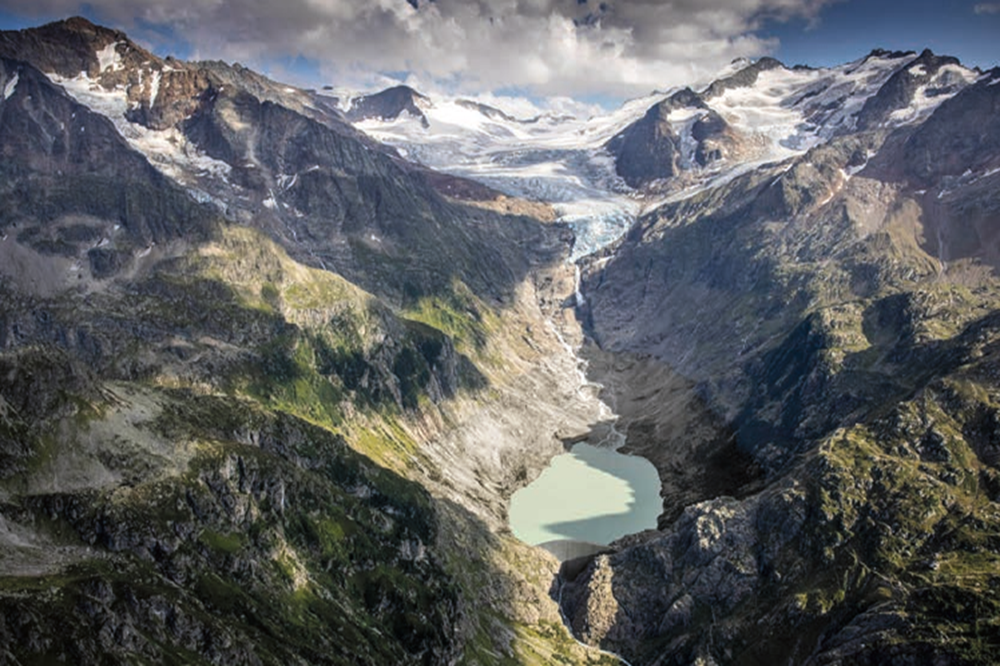The battle for Alpine water
A revival of the hydropower boom: 70 years ago, many Alpine rivers were dammed for the benefit of power stations, while valuable high valleys were built over. Today, new requirements are threatening their ecological functions. In view of the dwindling glaciers and increasing utilisation demands, a distribution battle is looming.
“Even if too little flows in them to nourish their ecosystems, it is just a little too much for them to be left alone”, writes Kaspar Schuler, Executive Director of CIPRA International, in his introductory guest article on Alpine rivers for the current Alpine Club Yearbook. Due to global warming, the prospects for Alpine glaciers and reservoirs are fatal: a Europe-wide crisis in the distribution of Alpine water cannot be ruled out, says Schuler. In 2014, for example, it was determined in France that the water quantity drawn from the Rhone would increase by 30 per cent by 2026. This will primarily affect power plants, not least the French nuclear power plants that draw large quantities of cooling water from this Alpine river, which will have too little water should the drought continue. “With droughts and dry periods becoming more frequent in the future, this will become an intra-European issue. The core Alpine countries of Austria and Switzerland want to store even more of their Alpine water at altitude in order to turn it into electricity and artificial snow for winter tourism. Their southern and northern neighbours, on the other hand, will have an increasing need for water in summer – for nourishing groundwater flows, agricultural irrigation, drinking water supplies and industry.” The concerns of aquatic ecology – i.e. to preserve and strengthen the biotopes along watercourses and the great diversity of species in the floodplains – are in danger of being completely lost in this conflict of use.
Committed to protecting the last river courses
Despite these conflicting objectives, there is a boom in the construction of hydropower plants and, in particular, pumped storage plants, which, however, “destroy” around 20 per cent of their usable energy production when pumping the water back up into reservoirs, as Schuler writes. “But as long as the price difference between the pumped electricity purchased and the peak electricity sold compensates for these pumping losses, this business model is profitable.” Some of the new glacier forefields in Switzerland created by the climate crisis are particularly attractive for the construction of new storage lakes, while elsewhere, e.g. in Austria, high Alpine moorland is to be sacrificed for energy production. Schuler emphasises that there are already other technical options for storing energy. In order to protect the remaining streams and rivers from the total expansion of hydropower, the signatory states to the Alpine Convention issued a joint declaration back in 2020 to protect the last, unspoilt stretches of river. In spring 2023, CIPRA also submitted a complaint to the Review Committee of the Alpine Convention, calling for an in-depth investigation into whether the acceleration laws on electricity production in Switzerland and the EU violate various protocols of the Alpine Convention. While Switzerland fundamentally denies its obligation to conduct any investigation in this regard, the EU Commission’s view will be addressed by the Alpine Convention’s Review Committee in October 2024.
Kaspar Schuler’s eight-page guest article in the “Alpine Club Yearbook 2025” is available in German in PDF format here: Alpine Club Yearbook Mountain 2025 (de)



